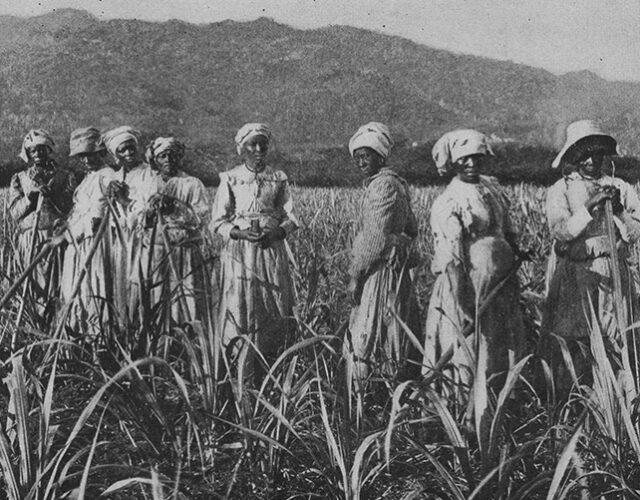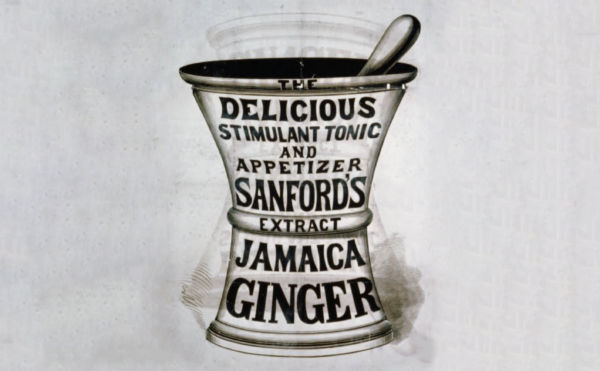In the ancient world sugar was used as a medicine, but over time it became a luxury indulgence. The desire for its sweetness shaped the modern world in some horrible ways, influencing both slavery and the Holocaust. People talk sometimes about blood diamonds—a natural resource whose extraction causes huge misery. This episode gives the phrase “blood sugar” a whole new meaning.
About The Disappearing Spoon
The Science History Institute has teamed up with New York Times best-selling author Sam Kean to bring a second history of science podcast to our listeners. The Disappearing Spoon tells little-known stories from our scientific past—from the shocking way the smallpox vaccine was transported around the world to why we don’t have a birth control pill for men. These topsy-turvy science tales, some of which have never made it into history books, are surprisingly powerful and insightful.
Credits
Host: Sam Kean
Senior Producer: Mariel Carr
Producer: Rigoberto Hernandez
Associate Producer: Padmini Raghunath
Audio Engineer: Jonathan Pfeffer
Transcript
It was called “survival of the fattest.”
Roughly 15 million years ago, the shaggy, ape-like ancestors of human beings faced a crisis. The climate was getting colder, which killed off the fruit trees our ancestors needed for food. They faced sure starvation.
Then, a little mutation changed everything. The mutation affected the way our bodies use sugar. Specifically, it allowed us to convert sugar into fat more easily.
Now, at the time, this mutation benefitted us. As fruit trees died off and fruit got scarcer, the mutation allowed us to wring more calories from food by converting it to fat to store for later. This extra fat was often the difference between starving and surviving. Hence the term, “survival of the fattest.”
But we don’t live in that ancient environment anymore. And that once-beneficial mutation seems to be fueling terrible health epidemics today—including skyrocketing rates of obesity, diabetes, and even cancer.
And that’s not all. Sugar shaped the modern world in other awful ways, too, from slavery to the Holocaust. People talk sometimes about blood diamonds—a natural resource whose extraction causes huge misery. Well, today we’re going to give the phrase “blood sugar” a whole new meaning.
From the Science History Institute this is Sam Kean and the Disappearing Spoon—a topsy-turvy science-y history podcast. Where footnotes become the real story.
For most of history, sugar came from sugar cane, a plant native to New Guinea. Cane is technically a grass, although a grotesque one. It grows in big woody stalks like bamboo. Those stalks produce a remarkably sweet juice that, when you slice the cane open, you can suck right out. It’s like balsa wood soaked in simple syrup.
From New Guinea, sugar cane slowly spread to India by 350 BC. There, people first crystalized sugar by extracting the sweet juice and evaporating the liquid.
So what did people do with sugar crystals in ancient times? Not what you’d expect. Some people back then used sugar as medicine. That’s because it caused physiological reactions like a racing heart. Other cultures classified sugar as a spice—something you’d sprinkle on meat or fish for a little kick.
But that view of sugar started to change when sugar drifted from India into the Arab world. The Arabs began using sugar in ways we’d recognize today—in pastries and jams and treats. The English word “candy” comes from an Arabic word, as do “syrup” and “soda.” An Arabic poet in the 800s even introduced the notion—which some of us follow better than others—that we should eat savory food first at meals and sweet treats at the end.
The Arabs eventually introduced their love of sweets to other Muslim groups, including the Moors, who conquered much of Spain and Portugal in the 700s. And Europeans loved sugar even more than the Arabs did. There was just one problem.
Weather-wise, most of Europe is cool and dry. But sugar cane thrives best in heat and humidity. So Europeans who craved sugar had to import it. Plus, sugar crystals took ridiculous amounts of labor to produce. As a result, sugar was extremely expensive in Europe for centuries—a luxury good that only the rich could afford.
So how did sugar transform from a luxury good into the cheap, mass-produced food of today? Through Christopher Columbus.
After Columbus stumbled into the Americas in 1492, he realized that the climate in the Caribbean was perfect for sugar—hot and humid. Columbus actually brought the first sugar cane plants to the Americas on his return voyage in 1493. Not long after, Columbus’s son Diego set up the first sugar plantation in the New World, in Jamaica.
After that, sugar became a major driver of colonization—right up there with gold and silver. Merchants in fact called sugar “white gold.” Sugar also fueled slavery, from Brazil up to Louisiana. At first, European colonizers enslaved American Indians to toil on plantations. Eventually they kidnapped and enslaved millions of Africans.
All that sugar then got shipped back to Europe, where people dumped it in coffee, in tea, in chocolate—products too bitter to consume in their natural state. Other sugar got fermented and distilled into rum. Demand for sugar products skyrocketed—as did the profits. When we think of slavery on plantations today, most of us probably think of cotton or maybe tobacco. But those crops were always sidelines compared to sugar. On some Caribbean islands, 90 percent of enslaved people worked in sugar production.
And it was utterly brutal work. Sugar cane stalks are heavy, reaching twenty feet tall, and they have to be hacked down with machetes. Those rusty blades were a huge hazard given how hard and fast enslaved people were forced to work. Heck, even the leaves on sugar cane stalks are surprisingly sharp and dangerous. They can slice your skin right open, or even blind you.
The work only got worse after harvesting, when sugar production started. Because they ooze sugar juice, cane stalks spoil quickly, often within a day. enslaved people had to hurriedly drag them to refining stations, which operated twenty-four hours a day, seven days a week.
At the refining station, huge vats of sticky, boiling sugar juice bubbled over, and spattered and often scalded people. Even worse were the wooden rollers that crushed the stalks and squeezed the juice out. These rollers weighed hundreds of pounds, and were often driven by cattle or horses or windmills. As a result, the rollers were not easy to stop.
This caused serious and sometimes fatal injuries for enslaved people who were forced to do this work. It contributed to the fact that the average lifespan of an enslaved person on a sugar plantation was just eight years.
Meanwhile, people in New York, in London, in Paris, kept guzzling their sugary coffee and tea, happily oblivious—or willfully oblivious—to the human cost of all that sweetness.
After the demise of cheap slave labor in the 1800s, the price of cane sugar rose. As a result, people began looking for other sources of sugar. One alternative that emerged was sugar beets, which can grow in colder climates. And here’s where the Nazis enter the story.
The Nazis poured tons of money into subsidizing the German sugar-beet industry. This was partly to win support among farmers; and partly to boost German agriculture. But it was also partly because Adolf Hitler was an absolute sugar fiend.
The stories about Hitler and sugar are legion—and they’re pretty disgusting. With most people, you ask how much sugar they want with their tea. With Hitler, you’d ask how much tea with the sugar. He’d fill whole teacups with sugar cubes, and add just enough tea to make a brown-grey sludge. Then he’d toss his head back and choke the sludge down.
On top of that, Hitler gorged on cream pies all the time, and he ate two full pounds of chocolates or pralines every day. He even dumped sugar into his wine. In his last, pathetic days in a bunker in Berlin, several of Hitler’s teeth were rotting out. He’d nevertheless mash pieces of cake into tiny crumbs, then gum them down to get his sugar fix.
All of which is pretty gross. But there’s a chilling side to the Nazi obsession with sugar, too.
When you extract sugar from beets, certain side products are left over. One side product is a slimy goop called schlempe.
Now, schlempe wasn’t too remarkable by itself. But if you heated this goop in a closed vessel, you could produce cyanide. And it just so happened that the Nazis were in the market for cyanide in the early 1940s. That’s because cyanide was the basis of Zyklon B, the gas used in the death chambers of the Holocaust. The sugar industry, in other words, was a vital cog in the Nazi death machine.
So far we’ve talked mostly about the evil effects of the sugar industry. But the sugar molecule itself also has plenty to answer for, in the way it’s helped ruin our diets.
Now, that judgment might sound harsh. Especially because, for decades now, governments have warned us that saturated fat is the real enemy in our diets.
This demonization of fat began with a famous study from the mid-1900s that seemed to show a correlation between saturated fats and heart disease. The more fat people ate, the worse their hearts looked. It seemed pretty damning.
And admittedly, the connection does make intuitive sense. You eat fat, you get fat. Right?
But however intuitive, that’s just too simplistic. Our bodies aren’t passive storage containers, where we just absorb whatever we eat and tuck it away somewhere. Our bodies are actually active chemical laboratories. We take what we ingest and transform it. And scientists now know that one of the key transformations takes place inside the liver, where sugars get alchemized into fat.
We can see glimpses of this alchemy in other animals. Starches and cellulose are also sugars, albeit in more complex forms. And think about what cows and pigs eat—grasses, grains, and so on. You ever seen a skinny pig? Similarly, cows eat virtually no fat, yet have no trouble packing on pounds. Their livers naturally convert starch and cellulose into fat.
The bottom line is, with mammals, it’s not simply fat in, fat out. Inside our livers, it’s more like sugar in, fat out.
But what about that famous study that shows the links between heart disease and fat intake? Well, in retrospect, it has some flaws. The study looked at the diets of people in seven countries. But it missed countries like France, where people consume large amounts of fat but have low rates of heart trouble. So again, fat in/fat out does not hold up.
Plus, an Italian scientist later scrutinized the study’s raw data. And while there was a correlation between heart disease and eating fat in certain countries, he found a stronger correlation between heart disease and eating sugar.
It’s the same for diabetes. Several studies show that sugar can cause insulin resistance, which can lead to diabetes.
In addition, obesity is a major risk factor for diabetes, and sugar correlates strongly with obesity. In the United States, for instance, 12 percent of the population was obese in 1950. That number creeped up to 15 percent in 1980, the year the U.S. government recommended people stopped eating fat.
Following that recommendation, many food manufacturers removed fats from food and started dumping in sugar instead. After that, obesity rates exploded. They jumped from 15 percent in 1980 to 30 percent in 2000. Today, that number is closer to 42 percent, and 70 percent of American adults overall are overweight. Diabetes rates have tripled since 1980 as well.
Meanwhile, sugar consumption has risen in lockstep. Instead of sugar cane or sugar beets, most people ingest sugar today via corn syrup—and we ingest a lot. According to one report, the average American today consumes the equivalent of 130 lbs. of sugar every year. 130! As others have pointed out, imagine going to the grocery store, picking up a 5-lb. bag of sugar, and guzzling 26 of those. That’s Hitler-level consumption.
Of course, some of you are probably screaming right now that just because sugar consumption correlates with obesity and diabetes, that doesn’t mean sugar caused those problems.
But here’s where we get back to that mutation I mentioned at the start of the show.
The mutation involves an enzyme called uricase [“you’re-ih-case”]. Virtually all animals have some version of the gene that produces it. But roughly 15 million years ago, the gene mutated in our shaggy, ape-like ancestors.
Normally the uricase enzyme interacts with a chemical called uric acid, which is a waste product when we metabolize food. Uricase breaks uric acid down. But the mutated version breaks down uric acid much more slowly. As a result, uric acid builds up in our blood.
Now, the biochemical details here can get pretty gnarly. But without going into too much detail, the mutated uricase enzyme allows uric acid to build up in the blood. And when uric acid builds up in the blood, the liver converts sugars to fats at higher rates. It also causes us to store more fat in the body.
Now again, 15 million years ago, when fruit was getting scarce, turning sugars into fat was a good thing, to prevent starvation. But in a world awash with cane sugar and beet sugar and corn sugar, we really don’t need something telling our livers to store more sugar as fat. This once-vital mutation is now deadly.
Especially when we consider the links between sugar and cancer.
To be clear, sugar doesn’t cause cancer. Cancer arises from genetic mutations that drive cells to reproduce like mad. But once a tumor develops, sugar makes things far worse. Sugar causes spikes of insulin the blood, and insulin essentially acts like crystal meth for tumors. It revs tumor cells up and sends them into a frenzy of activity.
You can see the results in autopsies. When old people die in their sleep, and doctors autopsy them, they often find a small tumor in their breasts or prostate or whatever. It’s still cancer, but the tumor was so sluggish that it didn’t kill them.
Insulin, however, makes sluggish cancers much more aggressive. The tumor grows far more rapidly and does more damage. So instead of people dying with cancer, people who consume too much sugar might die of cancer.
Sugar also helps cancer in other ways. Our bodies actually have a natural defense system to kill cancer cells by denying them food and starving them. But if your blood sugar is too high, cancer cells can evade that system and keep growing.
Sugar also helps cancer metastasize, or spread around the body. When cancer cells metastasize, they detach from the original tumor, enter the blood stream, and reattach in a different organ.
That initial reattachment is precarious for cancer cells, because they haven’t yet built blood vessels to provide themselves nutrients. But again, if blood-sugar and insulin levels are high, the reattached cells can siphon off enough food to survive and reproduce—and eventually kill you.
Given the links between sugar, obesity, and cancer, I’ve heard people grumble that, if sugar suddenly appeared on the market today, there’s no way the FDA would approve it. In fact, there’s a chance that we’ll look back on our sugar consumption nowadays—those jumbo pops and jumbo candy bars—with same horror we look back on Mad Men–era folks drinking martinis for breakfast and washing it down with a pack of cigarettes.
Now, I don’t want to be a killjoy here. Will having a popsicle in the summertime or a candy bar during a movie destroy your life? Of course not. But the human costs of sugar have always been high, and that trend continues today. You might not buy that sugar is the evilest molecule in the world. But I bet you’ll never hear the phrase “blood sugar” again in quite the same way.




